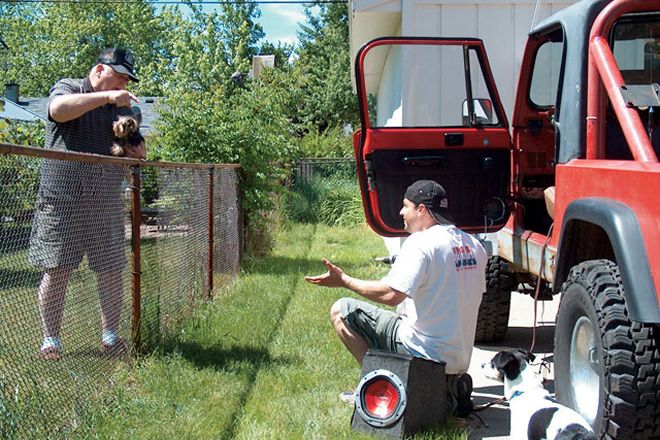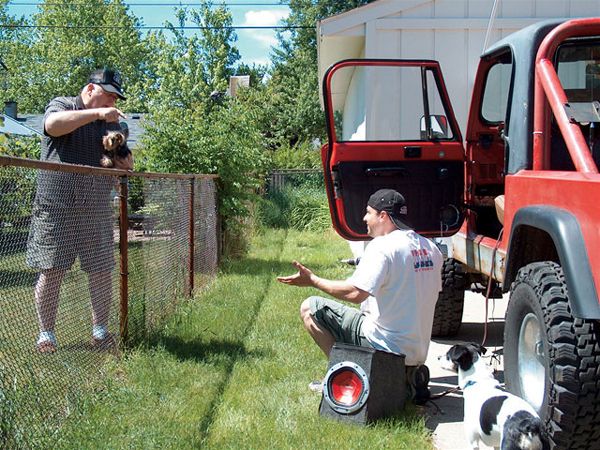

Walk through a lot of car shows and you'll be violated by a variety of sounds. If you're lucky, those sounds will be coming from engines, but more often than not, the music will be unfamiliar to you. Car stereo systems have gotten beyond ridiculous lately, and when all is said and done, the bill for these battery-draining wonders is usually more than GM's debt.
It's possible to have good tunes without hiding money from the government, although the show systems of today are somewhat interesting-the extra weight, cost, and loss of space is more than the typical Jeeper can bear. (The choice of a toolbox or a speaker box is no choice.) Even our guitar-blazing Hazel could come to the right conclusion.
An audio snob would tell us not to waste our time or money installing a decent sound system in a Jeep. Lucky for us, we don't give a rat's ass. We put a call into Sony for some advice on what to do in a CJ for sound, with three requests: weatherproof parts, small space, and the ability to play all of those MP3s we ripped off before Napster got slammed by those whiners from Metallica (as if they weren't rich enough already). Sony recommended a CD head unit with disc-changer control. That means we could have 11 CDs at our disposal. A pair of two-way marine (weatherproof) speakers and an 8-inch subwoofer are driven by a 600-watt amplifier that doubles as a space heater.
It seems like a lot of equipment to fit in our half-cab Scrambler, but it fits. If you hate to see a CJ cut for sound equipment, you can stop reading now.
The CJ never came with the massive amounts of foam padding or rubber insulation to reduce NVH (noise, vibration, and harshness). Mud tires and the wonderful 4.2L jackhammer under the hood scream freely. So before installing the tunes, we hit our local hardware store for an inexpensive way to quiet things down.
Bass: Lower frequencies of sound, usually characterized by boom boom.
Subwoofer: The speaker for bass sound.
Mid-range: Middle frequencies of sound, like a guitar.
High-range: High frequencies of sound, like a whistle.
12 volts constant: A source of power that never drops in voltage unless the battery is dead. It's usually used to retain memory, like preset radio stations on the head unit.
12 volts switched: A source of power that supplies 12 volts when the ignition is turned on.
12-volt turn on: Supplies 12 volts when the head unit is turned on. It's used for putting a power antenna in the air or turning on the amplifier.
Ground: The negative side of a car battery is connected to the vehicle chassis. Almost any clean, bare metal surface can be used as a ground.
RCA cables: Used to transport low-level sound to the amplifier. Keeping the sound strength low allows for a cleaner sound after it's amplified.
Head unit: The brains behind the system located right in front of the driver.
Amplifier: Boosts the power of the sound created by the head unit and creates torque for sound.
Disc changer: A unit that stores multiple CDs or DVDs and can be controlled by the head unit.
NVH: Noise, vibration, and harshness is a term used mostly by the OEMs to grade the effects a vehicle has on the human body under driving conditions. For instance: a New York subway with a plastic seat in the summer heat next to some bum who just vomited on himself has pretty lousy NVH.
Jackass: Someone who tries or succeeds in stealing your stereo.
Bad luck: When your girlfriend moves out and takes the film you shot for a story.







